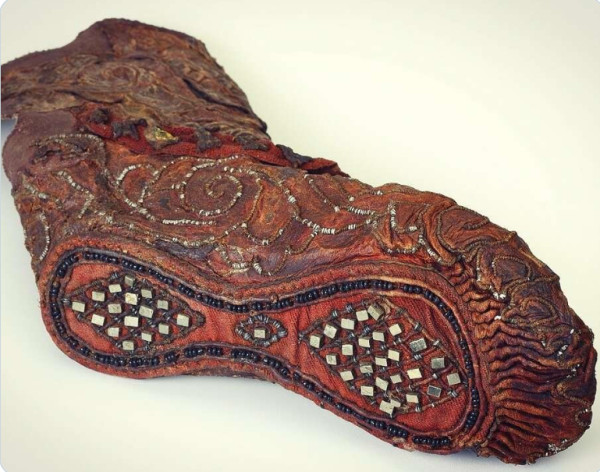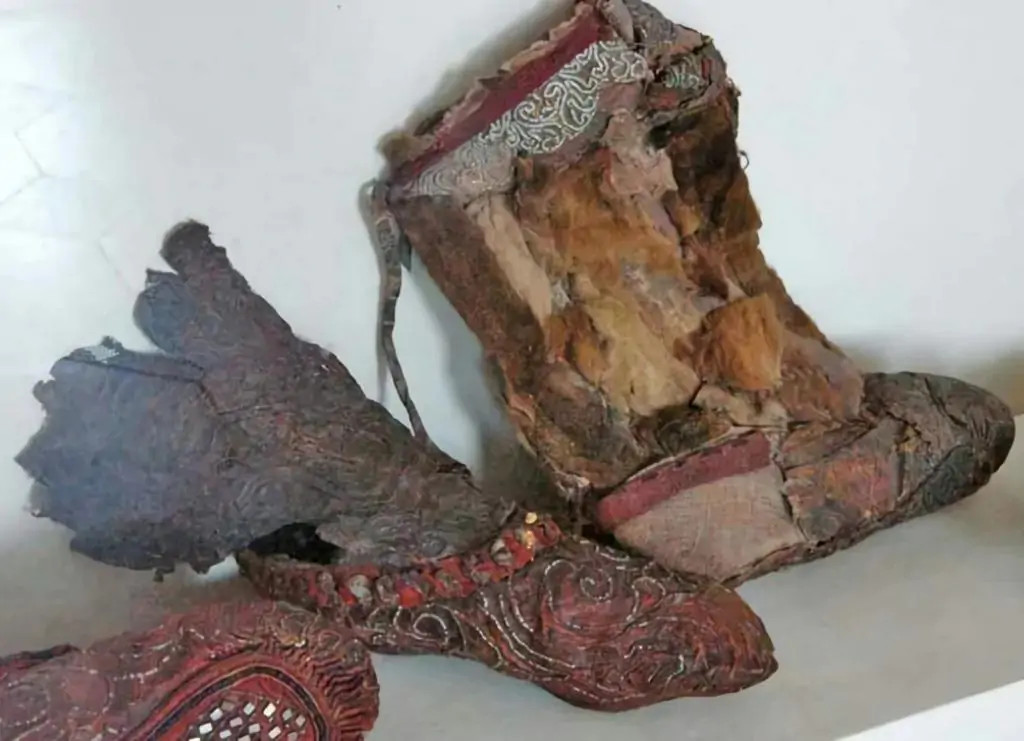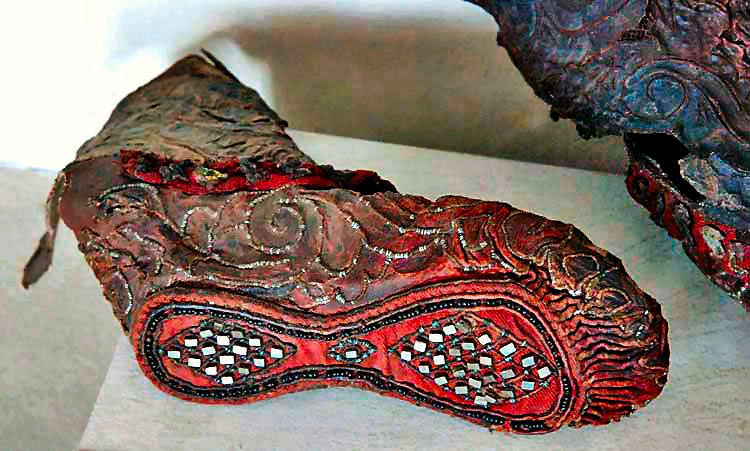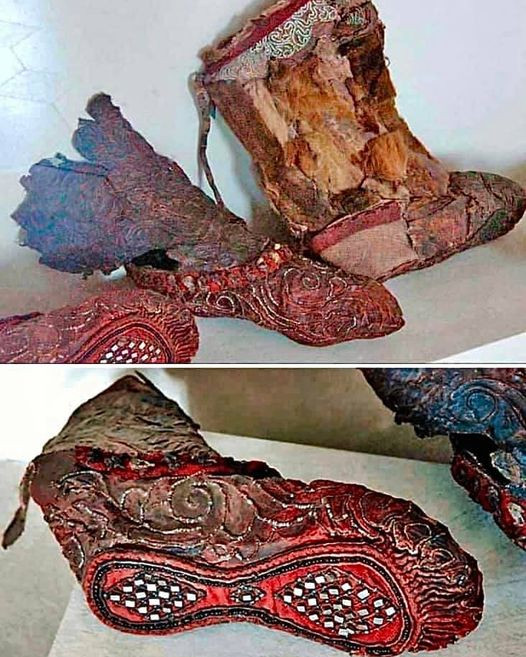A Timeless Discovery in Siberia
In the rugged terrain of Siberia’s Altai Mountains, a remarkable discovery in 1948 opened a window to the ancient past. Archaeologists unearthed a women’s boot, its intricate patterns still intact after 2,300 years. This extraordinary find, accompanied by jewelry, food, and weapons, offers a rare glimpse into the world of the Scythians, a nomadic civilization that once roamed these lands.

The Scythian Way of Death
The Scythians, who flourished from the 9th to 2nd century BC, were known for their elaborate burial customs. They constructed wooden cabin-like structures deep underground, placing their dead in log coffins surrounded by prized possessions. This practice, combined with the preservative effects of the Altai permafrost, has gifted modern researchers with a treasure trove of well-preserved artifacts.

A Masterpiece Frozen in Time
Craftsmanship That Defies the Ages

The Scythian boot stands as a testament to ancient artistry. Crafted from soft red leather, it boasts a geometric design meticulously sewn with pyrite crystals and black beads. The boot’s elaborate sole showcases the exceptional skill of Scythian craftspeople, allowing us to imagine the steps of those who walked these mountains millennia ago.
The Altai: Nature’s Time Capsule
The Altai Mountains, spanning Central and East Asia, have long been a natural vault for ancient history. The region’s permafrost has preserved not only human remains but also a wealth of artifacts, offering invaluable insights into past civilizations.
A Legacy Etched in Leather

This 2,300-year-old boot is more than just footwear; it’s a tangible link to our ancestors. Its discovery reminds us of the ingenuity, artistry, and spiritual beliefs that shaped the Scythian culture. As we continue to unearth such relics, we deepen our understanding of the rich tapestry of human history that has shaped our world.

